Tulsa, Oklahoma is a city bursting with history, creativity, and community spirit. While it’s widely recognized for its striking art deco architecture and a vibrant live music scene, one of the most authentic and enriching ways to experience the city is by visiting its cultural museums.
The Cultural Museums in Tulsa serve as living archives of the city’s rich past and evolving identity. Whether you’re a history buff, art enthusiast, or a traveler eager to learn more about local heritage, these museums offer immersive stories that connect generations—from the resilience of Black Wall Street to the artistry of Native American communities.
Tulsa is also home to several Native American museums that showcase the traditions, artifacts, and contributions of Indigenous peoples throughout Oklahoma. Meanwhile, the renowned Philbrook Museum of Art blends classic and contemporary works in one of the country’s most scenic museum settings, making it one of the top-rated Oklahoma museums worth visiting.
From interactive exhibitions and rare collections to historic landmarks that shaped the nation’s conversation, the cultural museums in Tulsa are more than just places to see—they’re places to feel, learn, and connect.
In this complete guide, we’ll explore the top museums that define Tulsa’s cultural landscape and why they should be at the top of your travel itinerary.
Table of Contents
1. Greenwood Cultural Center – Honoring Black Wall Street
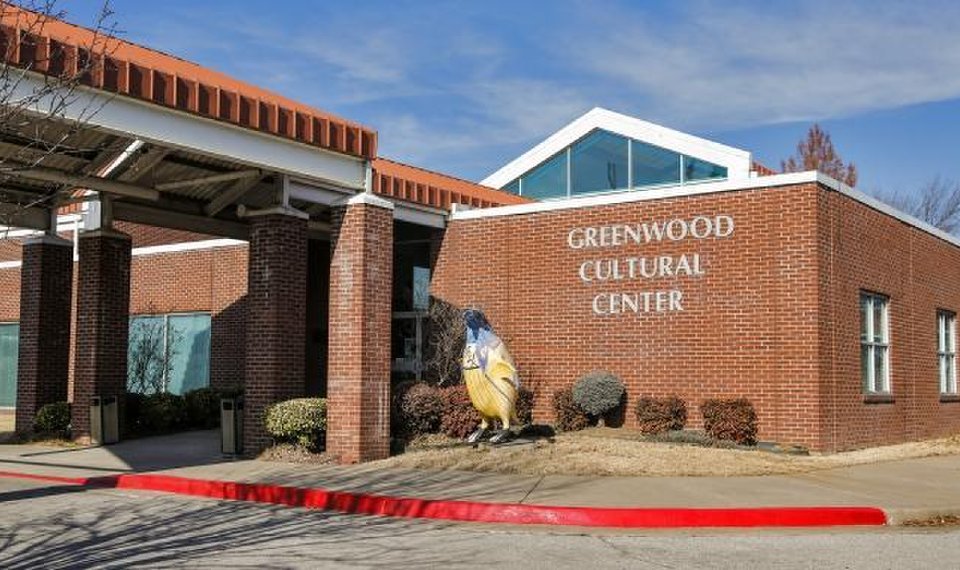
No visit to Tulsa is truly complete without stepping into the Greenwood Cultural Center, a cornerstone among the cultural museums in Tulsa. Located in the heart of the historic Greenwood District—once known as Black Wall Street—this museum is a powerful tribute to the resilience, innovation, and legacy of African-American communities in Oklahoma.
What You’ll Discover:
- Powerful exhibits on the 1921 Tulsa Race Massacre
- Inspirational stories of Black entrepreneurship in Greenwood
- Archival photos, documents, and community-driven art
- Cultural programs, storytelling sessions, and live events
This is not just a museum; it’s a place of reflection and learning. The center plays a critical role in preserving the memory of Black Wall Street history while providing insight into ongoing civil rights efforts. For anyone looking to explore Tulsa history museums that go beyond the surface, the Greenwood Cultural Center is a moving and necessary experience.
2. Philbrook Museum of Art – Art Meets Architecture
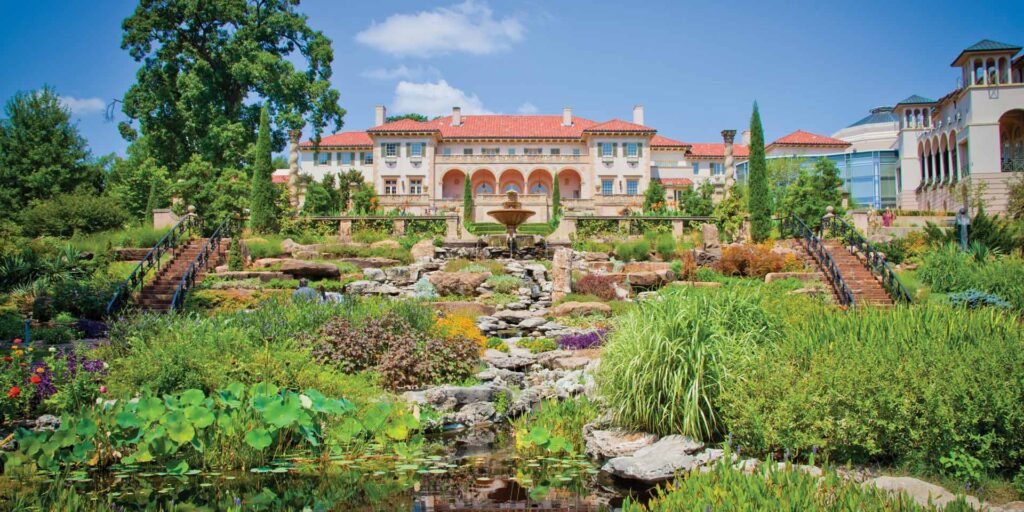
Among the most iconic and Instagram-worthy spots in Tulsa, the Philbrook Museum of Art stands out as one of the most breathtaking Oklahoma museums worth visiting. Nestled inside a 1920s Italianate villa, the museum’s blend of architecture, visual art, and gardens makes it more than just a gallery—it’s a full cultural experience.
Highlights:
- Renowned collections of Native American art, African, European, and Asian masterpieces
- Rotating exhibits featuring modern and contemporary artists
- 25 acres of manicured gardens, sculptures, and walking paths
- Engaging programs for children, families, and art lovers alike
Whether you’re a seasoned art enthusiast or a curious traveler, the Philbrook Museum of Art offers both depth and beauty. With art ranging from classical to cutting-edge, it’s a top choice for anyone compiling a list of the best cultural museums in Tulsa.
3. Gilcrease Museum – Art and History of the American West
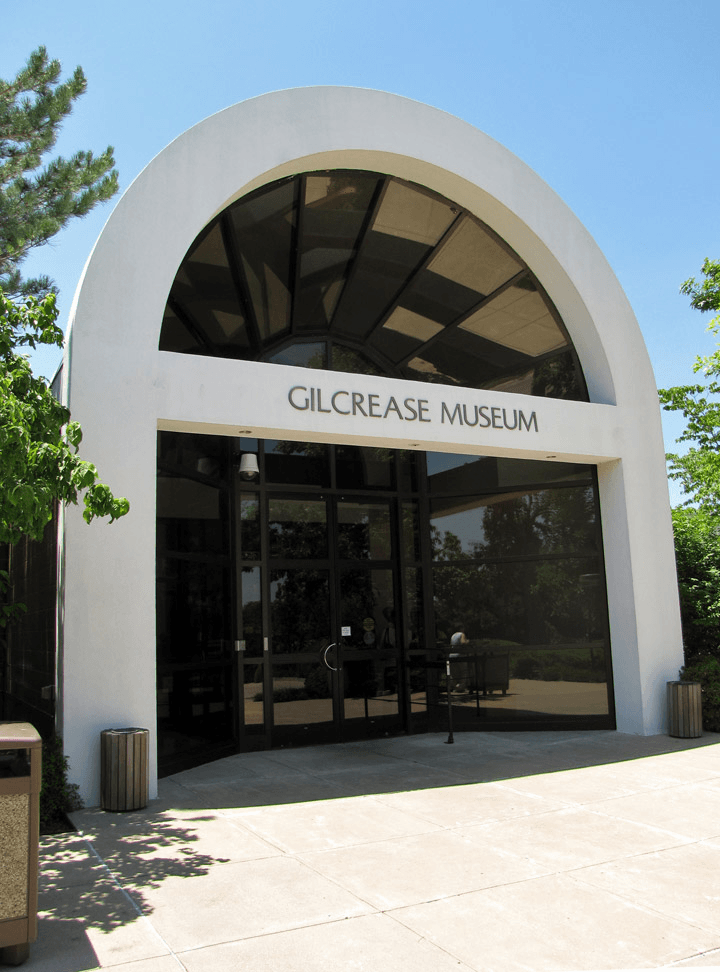
If your interest leans toward stories of the American frontier and Native traditions, the Gilcrease Museum should be at the top of your itinerary. Located just minutes from downtown Tulsa, this institution is one of the most prominent Native American museums Tulsa has to offer.
Why It’s Special:
- The world’s largest public collection of American West art and artifacts
- Extensive archives on Native American history and culture
- Presidential papers and early American documents
- Thought-provoking exhibits and rotating educational programming
Gilcrease doesn’t just display art—it preserves identity, culture, and the evolution of America’s landscape. Whether you’re a student of history or simply curious, this museum brings depth to the Tulsa museum guide and showcases why Tulsa is a cultural powerhouse in the region.
4. Woody Guthrie Center – The Voice of the People

Located in the bustling Tulsa Arts District, the Woody Guthrie Center is where storytelling, music, and activism intersect. It’s more than a music museum—it’s a dynamic venue that honors one of America’s most influential folk artists and his lifelong dedication to justice, empathy, and unity.
What You’ll See:
- Interactive displays chronicling Woody Guthrie’s life and message
- Original handwritten lyrics, journals, and instruments
- Multimedia exhibits on cultural and political movements
- Featured exhibits spotlighting modern voices of change
This center speaks to the spirit of community and courage. For those exploring cultural museums in Tulsa that focus on social movements and people-powered change, this space offers an unforgettable, immersive experience.
5. Oklahoma Jazz Hall of Fame – Tulsa’s Musical Legacy
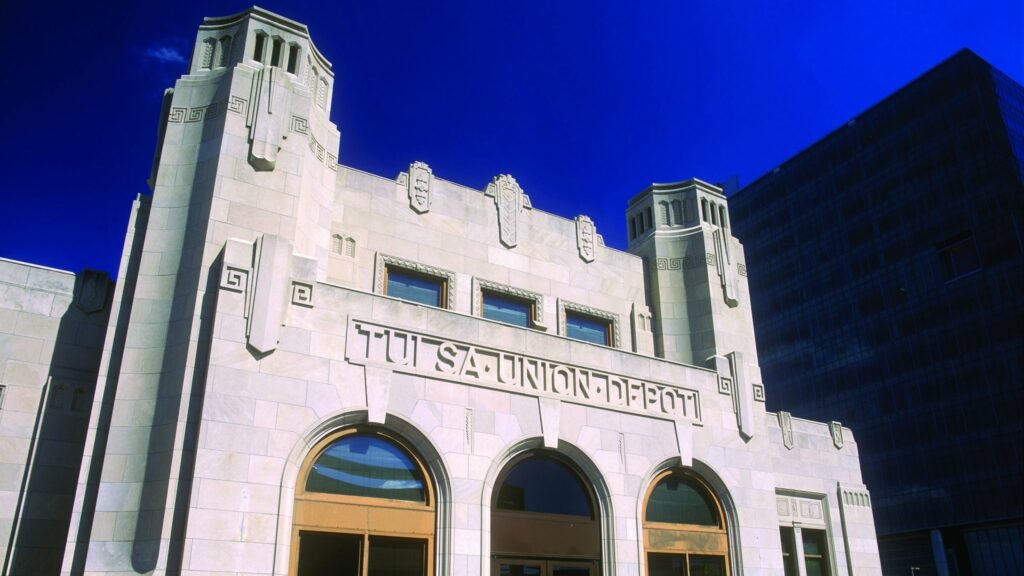
Housed in the historic Union Depot, the Oklahoma Jazz Hall of Fame brings Tulsa’s rich musical heritage to life through exhibits, performances, and community engagement. It’s a celebration of jazz, blues, gospel, and the artists who shaped the sound of Oklahoma.
What to Expect:
- Interactive exhibits honoring Oklahoma’s music legends
- Jazz, blues, and gospel live performances
- Music workshops, outreach, and education programs
- Cultural festivals and evening concerts throughout the year
The museum is a rhythm-filled stop on your cultural tour. If you’re tracing the artistic heart of Tulsa, this is one of the Oklahoma museums worth visiting for both music lovers and culture seekers alike.
6. Tulsa Historical Society & Museum – The City’s Timeline
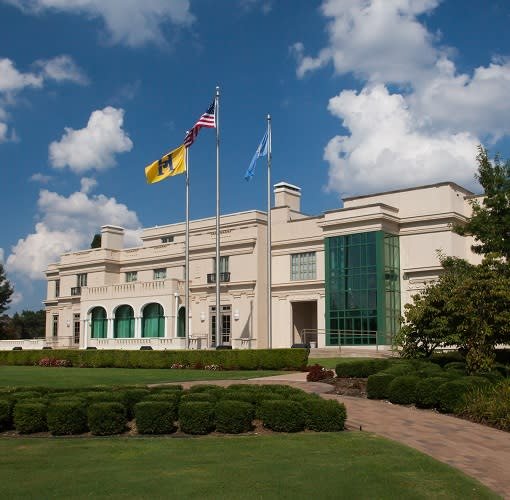
Set in a historic mansion along Peoria Avenue, the Tulsa Historical Society & Museum captures the evolution of the city itself—from early settlers and oil booms to civic development and local legends. It’s ideal for those wanting a deeper dive into how Tulsa became what it is today.
Explore:
- Eight galleries with rotating exhibitions on Tulsa’s past
- Vintage photography and preserved artifacts
- Exhibits on immigrant stories, neighborhoods, and civic milestones
- Guided walking tours, family activities, and seasonal events
This museum offers a rounded and respectful lens on local history. It’s one of the top cultural museums in Tulsa for travelers who value immersive learning experiences.
Bonus Cultural Museums in Tulsa You Shouldn’t Miss
While the above destinations are Tulsa’s cultural cornerstones, there are other lesser-known gems worth visiting:
DECOPOLIS Tulsa Art Deco Museum
A vibrant, quirky stop for fans of architecture and pop culture, this museum celebrates Tulsa’s iconic art deco design with flair.
Tulsa Air and Space Museum & Planetarium
An ideal stop for science and aviation lovers, offering hands-on exhibits and immersive planetarium shows. Great for kids and families.
Sherwin Miller Museum of Jewish Art
An important space featuring Jewish heritage, contemporary art, and Holocaust education—one of the few of its kind in the region.
These hidden cultural gems complement the larger institutions and show just how diverse Tulsa’s museum scene really is.
Planning Your Museum Hopping Itinerary in Tulsa
Exploring the vibrant Cultural Museums in Tulsa can easily turn into a full-day (or multi-day) adventure. To make the most of your trip, a little planning goes a long way—especially if you want to visit major landmarks like the Philbrook Museum of Art, Native American museums in Tulsa, and other Oklahoma museums worth visiting.
Tulsa Museum Passes and Entry Deals
Several Tulsa cultural institutions participate in combo ticket programs, offering discounted access to multiple museums. For example, seasonal promotions often bundle entry to the Philbrook Museum of Art, the Woody Guthrie Center, and the Tulsa Historical Society & Museum.
- Students and residents can enjoy free or reduced admission days—usually announced in advance.
- Always check the Tulsa Regional Tourism or GoTulsa websites for up-to-date museum deals and event calendars.
- Don’t forget to explore Museums on Us® by Bank of America, which occasionally includes Tulsa museums.
Family-Friendly Tips
If you’re traveling with children, Tulsa offers some of the most family-friendly museums in Oklahoma.
- The Philbrook Museum of Art often provides hands-on activities in their garden spaces and art studios, making it engaging for young minds.
- The Tulsa Air and Space Museum is another hit, with flight simulators and science exhibits that spark curiosity.
- Many locations, including the Gilcrease Museum and Greenwood Cultural Center, offer printable activity sheets or interactive scavenger hunts tailored for kids.
These museums blend education with entertainment, making them perfect for a day of cultural learning and family bonding.
Accessibility and Visitor Comfort
Most cultural museums in Tulsa are fully ADA-compliant, with ramps, elevators, and wheelchair-friendly layouts. Free or metered parking is typically available at or near museum entrances.
- Many museums offer sensory-friendly hours or quiet zones for visitors who may need them.
- Ask about stroller access, guided tours, and service animal policies when planning your itinerary.
Accessibility ensures that everyone can enjoy Tulsa’s cultural and historical richness without barriers.
Best Times to Visit Cultural Museums in Tulsa
Timing your visit can greatly enhance your experience:
- Spring and Fall are ideal seasons to enjoy the Philbrook Museum of Art’s outdoor gardens and the grounds of the Gilcrease Museum.
- Weekdays tend to be less crowded, offering more time and space to appreciate the exhibits at your own pace.
- Many Native American museums in Tulsa and other top attractions host special exhibitions, festivals, and live events during the summer.
- For an indoor-friendly trip during winter, the Tulsa Historical Society & Museum and Woody Guthrie Center are perfect for cozy cultural exploration.
Nearby Attractions and Food Stops
After diving into the best Oklahoma museums worth visiting, it’s worth extending your Tulsa journey with nearby attractions:
- Downtown Tulsa Walking Tour: Admire Art Deco architecture and vibrant street murals between museums. You can grab a free map or guided tour schedule from Tulsa Tours.
- Guthrie Green: Located in the Arts District, this urban park often hosts live music, yoga classes, and food trucks. A perfect place to unwind between museums.
- Antoinette Baking Co.: Just steps away from the Woody Guthrie Center, this cozy café is beloved for its artisan pastries and espresso. Ideal for a midday break.
- Mother Road Market: Tulsa’s first food hall, offering global cuisines, local shops, and community vibes. Only a few minutes away from the main museum circuit.
What are the must-visit cultural museums in Tulsa, OK?
Some of the most popular cultural museums in Tulsa include the Philbrook Museum of Art, Greenwood Cultural Center, Gilcrease Museum, Woody Guthrie Center, and the Oklahoma Jazz Hall of Fame. These spots reflect Tulsa’s rich blend of art, music, and history.
Are there any Native American museums in Tulsa worth exploring?
Yes, the Gilcrease Museum has one of the most extensive collections of Native American artifacts and art in the country. It’s widely regarded as one of the top Native American museums in Tulsa and a must-visit for anyone interested in Indigenous culture.
Is the Philbrook Museum of Art family-friendly?
Absolutely. The Philbrook Museum of Art is not only kid-friendly, but it also offers gardens to explore, interactive exhibits, and special family events throughout the year. It’s one of the most engaging Oklahoma museums worth visiting for all ages.
What is the best time to visit cultural museums in Tulsa?
Weekdays are generally less crowded, and spring or fall offers the best weather—especially if you’re visiting museums with outdoor exhibits like the Philbrook or Gilcrease. Many museums also host seasonal events and free admission days.
How long should I spend visiting Tulsa’s cultural museums?
Plan at least 2–3 hours per museum. If you’re doing a full-day tour, you can comfortably visit 2–3 major sites. For deeper exploration or guided tours, especially at places like the Greenwood Cultural Center or Philbrook Museum of Art, consider a full-day itinerary.
Final Thoughts: Culture, Connection, and Community
The cultural museums in Tulsa don’t just display art and historical artifacts—they tell the ongoing story of a city shaped by resilience, creativity, and heritage. From honoring the legacy of Black Wall Street to showcasing masterpieces at the Philbrook Museum of Art, each museum paints a vivid picture of Tulsa’s identity.
Visiting these institutions isn’t just an educational experience—it’s deeply personal. You’ll walk away with a better understanding of both the city and yourself. Whether you’re diving into the powerful exhibits at Native American museums in Tulsa, learning about the American West at Gilcrease, or discovering the rhythm of jazz at the Oklahoma Jazz Hall of Fame, you’re engaging with living history.
If you’re building a list of Oklahoma museums worth visiting, Tulsa should be your first stop. And if you love exploring cultural experiences across the U.S., you might also enjoy our features on art colony weekends in Taos, NM, vinyl browsing and gallery hops in Asheville, NC, or pop-up art galleries in Chattanooga, TN.
So next time you’re in the heart of Oklahoma, carve out time for these extraordinary cultural experiences. The Cultural Museums in Tulsa don’t just preserve the past—they inspire the future.




